Read Reviews
The Best Plunge Saws
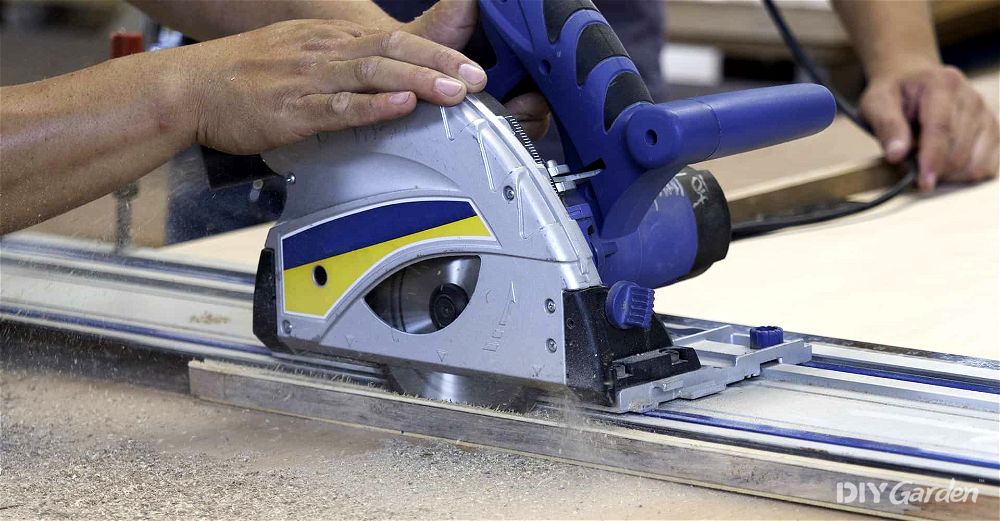
-
Best plunge saw for professional use - Dewalt DWS520KT-GB 165 mm Plunge Saw with TSTAK Box
-
Best professional plunge saw kit - Makita SP6000J1 165 mm Plunge Saw with Guide Rail, Makpac Case, and Rail Bag
-
Best cordless track saw - DeWalt DCS520NT-XJ 165 mm 54V XR FLEXVOLT Plunge Saw and TSTAK Case
-
Best cordless plunge saw on 18V platform - Makita DSP600ZJ 165 mm 36V LXT Plunge Cut Saw with Makpac Case
-
Best budget track saw - Scheppach PL55 160 mm Plunge Saw with Two Guide Rails
-
Best track saw for beginners - TOUGH MASTER 165 mm Plunge Saw with Two Guide Rails
-
Best budget corded track saw - GMC 336282 165 mm Plunge Saw and Track Kit with Two Rails
Plunge Saw Reviews
1. Dewalt DWS520KT-GB 165 mm Plunge Saw with TSTAK Box[ SAVE 4% ]
Best plunge saw for professional use
- Combined with the AirLock system, this track saw will recover 90% of the dust it creates. It means less tidying up and far fewer dust particles in the air. It’s efficient and healthier.
- You get a generous 3 m long power cord with this track saw. Clip the cable to your dust extraction hose, and you’ve got plenty of space to move around the workpiece.
- The DeWalt TSTAK VI case is brilliant. There’s plenty of room to keep the saw, spare blades, and accessories organised, a wide handle on the top, and you can connect it to other cases.
- One of the worst things that can happen when using a track saw is kickback. The saw can travel back along the rail, so DeWalt have developed effective anti-kickback technology.
- It’s a corded power tool, so there’s one more cable you need to worry about. If you’re working off grid or away from a reliable power source, battery power is the way to go.
- This is an expensive saw for DIYers because it doesn’t include any track. Compared with the Makita that comes with a length of track and a case, it’s not a complete set.
- Depth and angle of cut adjustments would be easier with a cam lever rather than a simple knob, if regular adjustments are required.
- Type
- Corded
- Power
- 1,300 Watts
- No-Load Speed
- 1,750-4,000rpm
- Blade Diameter
- 165mm
- Blades Supplied
- 1x48T
- Guide Rails
- No
- Cut Depth @ 90°
- 59mm
- Cut Depth @ 45°
- Not stated
- Weight
- 5.0kg
- Build Quality
- 5
- Performance
- 5
- Ease of Use
- 4
- Value for Money
- 3
The US tool brand with the recognisable yellow and black colour scheme, DeWalt are the brand of choice for professional carpenters as well as in-the-know DIYers. And when it comes to plunge saws, the DWS520KT is one of the best available right now. The powerful motor and effective dust extraction make this saw a pleasure to use.
Boasting a 1,300 Watt motor and a quality 48T blade that can spin from 1,750 – 4,000 rpm, this corded saw will make cuts of down to 55 mm with a rail or squeeze out an extra 4 mm with the rail removed. It’s a bit hefty at 5 kg, but the extra weight also helps to keep the saw running straight.
I really like how easy it is to make fine rail adjustments with a set screw, it means you can make millimetre changes to the rail and precisely cut every time. Operation is smooth as you’d expect from a quality DeWalt saw and the double handles are comfortable and nicely rubberised.
What sets this apart as the best plunge saw for carpenters is that it’s compatible with the DeWalt AirLock system. It’s an incredibly effective way to minimise the amount of dust that ends up in the air or on surfaces, so you can use it indoors or outdoors.
Did you find this review helpful?
2. Makita SP6000J1 165 mm Plunge Saw with Guide Rail, Makpac Case, and Rail Bag
Best professional plunge saw kit
- The large, rubberised handles are ergonomically designed for comfort and control. And the speed control wheel is easy to control with your thumb when working on different materials.
- You can easily switch to a 22.5° mitre cut with the green selector knob, which is ideal for making accurate and repeatable bevels. It’s a pro feature that saves a lot of time.
- The Makpac container system and rail case included with the kit will keep both the saw and rail safe between jobs. There’s space to hold other bits, and you get a rail extension kit too.
- Compared with the DeWalt DWS520KT, you get an extra metre or power cable. Four metres is long enough to work on large size workpieces without getting tangled up.
- Even though you get an impressively long cable, cordless saws are better when working on site or away from a reliable power source.
- Compared with the excellent Air Lock dust extraction system found on the DeWalt plunge saw, the Makita leaves a bit more in the air and on surfaces.
- Although the foam rubber underside to the rail makes it non-slip, you should consider getting your hands on rail clamps. For high precision jobs, they’re worth the money.
- Type
- Corded
- Power
- 1,300 Watts
- No-Load Speed
- 2,000-5,200rpm
- Blade Diameter
- 165mm
- Blades Supplied
- 1x48T
- Guide Rails
- 1x1500mm
- Cut Depth @ 90°
- 55mm
- Cut Depth @ 45°
- 39mm
- Weight
- 4.2kg
- Build Quality
- 5
- Performance
- 4
- Ease of Use
- 4
- Value for Money
- 5
Japanese tool supremos Makita make brilliant professional-level kit that is loved around the world. Their SP6000J1 is probably the best track saw kit on the market right now. You get an impressive saw and useful accessories for the money, which makes this an affordable way to get accurate cuts every time.
The corded saw unit part of the kit is powerful enough, with 1,300 Watts of power that can whip the 165 mm 48 tooth blade round from 2,000 – 5,200 rpm, and 55 mm depth of cut at 90°. Using electronic speed control, the blade will keep spinning at a reliable rate too, which makes for better cuts.
What I really like about this saw is that you get everything you need to start making straight and accurate cuts right away. Makita’s rail comes with anti-slip rubber on the bottom side which means you don’t always need to clamp it down, and an anti-splinter strip for even cleaner cuts.
Did you find this review helpful?
3. DeWalt DCS520NT-XJ 165 mm 54V XR FLEXVOLT Plunge Saw and TSTAK Case[ SAVE 15% ]
Best cordless track saw
- Finely adjusting the position of the saw on the track is made incredibly simple with cam levers. It also means it can run on different tracks without binding or wobbling.
- Anyone familiar with plunge saws knows how much dust they create. This saw is compatible with DeWalt’s AirLock extraction system though, which can remove up to 90% of all particles.
- The anti-kickback technology will lock the saw into the rail if the blade binds up on the workpiece. This is a brilliant safety feature that should also protect delicate surfaces.
- Although it’s not included, DeWalt’s track is cleverly designed so you can cut in both directions. It’s a simple thing but saves an awful lot of time and head scratching.
- Getting set up with DeWalt’s XR FLEXVOLT technology doesn’t come cheap. The DCS520 is sold as a bare tool, so you’ll need to invest in a charger and batteries for 54 Volt power.
- Some users might not like DeWalt’s parallel plunge action. It settles down into the workpiece, whereas most other plunge saws pivot downwards on a rear axle. It takes getting used to.
- Changing blades is a bit of a long process. There are several levers and locks that need to be engaged before you can remove the blade with the on-board hex key.
- Type
- Cordless
- Power
- 2 x18 Volts
- No-Load Speed
- 2,500-4,200rpm
- Blade Diameter
- 165mm
- Blades Supplied
- 1x42T
- Guide Rails
- No
- Cut Depth @ 90°
- 59mm
- Cut Depth @ 45°
- Not stated
- Weight
- 4.7kg
- Build Quality
- 5
- Performance
- 5
- Ease of Use
- 3
- Value for Money
- 3.5
It wasn’t long ago that battery-powered tools felt like the little brother to beefy corded drills and saws. That’s no longer the case, and the DeWalt DCS520NT 54V plunge saw is the perfect example. With up to a huge 54 Volts of power, you can get corded performance in a lightweight and completely portable saw.
The brushless motor on board this variable-speed plunge saw puts out from 2,400 – 4,200 rpm. The 165 mm blade has 42 teeth and can cut down to 55 mm with a rail, or up to 59 mm without. Weighing just under 5 kg with the battery installed, this is a relatively lightweight saw as well.
The real star of the show here is DeWalt’s XR FLEXVOLT technology though. You can run this saw with your typical 18 Volt XR batteries, but you can also upgrade to FLEXVOLT, which means 54 Volts of power. It’s seriously impressive and means that this track saw can produce much power as a corded version. If you invest in this powerful battery system, you can run a whole range of powerful equipment on-site and off-grid.
Did you find this review helpful?
4. Makita DSP600ZJ 165 mm 36V LXT Plunge Cut Saw with Makpac Case
Best cordless plunge saw on 18V platform
- Compared with the DeWalt DCS520NT, you don’t need to invest in a completely new power system to run this saw. You can use your standard 18V LXT batteries to get the job done.
- The top speed of 6,300 rpm is class leading and incredibly fast. It’s not always about the highest blade speed, but it’s good to know that this is a capable track saw.
- Like most battery powered tools, this one comes with an effective electronic braking system. When you let your finger off the trigger, the blade stops dead. Handy, and incredibly safe.
- There’s a clever scribe setting you can use to make a particularly shallow cut. This is ideal for breaking through a layer or veneer to minimise tear out, or for making a light pass.
- Compared with the huge amount of power you get from the 54 Volt system on the DeWalt DCS520NT, the Makita’s 36 Volts is lacking, but it’s only running on the LXT battery system.
- Although this is an affordable but high quality plunge saw, you need to add the cost of a track before it becomes fully useful. It’s a bare saw, so it doesn’t come with batteries or a charger.
- Type
- Cordless
- Power
- 2 x18 Volts
- No-Load Speed
- 2,500-6,300rpm
- Blade Diameter
- 165mm
- Blades Supplied
- 1x56T
- Guide Rails
- No
- Cut Depth @ 90°
- 56mm
- Cut Depth @ 45°
- 40mm
- Weight
- 4.4 - 5.1kg
- Build Quality
- 5
- Performance
- 3.5
- Ease of Use
- 5
- Value for Money
- 3.5
One of the more popular track saws on the market is the Makita DSP600ZJ. It’s a powerful beast that takes not one, but two 18V batteries that up the output to a whopping 36 Volts. This bare tool is a brilliant addition to anyone who’s serious about making straight cuts in timber or laminate.
The powerful brushless motor makes 2,500 – 6,300 rpm, and the included 56 tooth Efficut blade is ideal for cordless tools like this. You can cut down to a maximum depth of 56 mm, and the overall weight is just over 5 kg with a pair of batteries in place. You also get one of Makita’s cavernous Makpac hard cases to store everything between jobs.
To get the maximum amount of power from LXT batteries, this saw takes two at a time. There’s a charge level indicator for both too, which is helpful to have. If you decide to add high capacity batteries such as the 5.0 or 6.0 Ah ones, you will be able to cut for metres and metres without needing a recharge.
Did you find this review helpful?
5. Scheppach PL55 160 mm Plunge Saw with Two Guide Rails[ SAVE 9% ]
Best budget track saw
- There are a couple of clever little accessories that come with this kit. There’s a plastic bumper that stops the saw running off the end of the track and an anti-tilt protector.
- The slim blade housing does two good things for this saw. It makes the dust collection more effective, and it means you can cut up to 15.5 mm close to a wall.
- You get an awful lot for your money, especially compared with the expensive cordless saws like the Makita DSP600ZJ. 1.4 m of track is enough to work on a wide range of jobs.
- More than a few users have complained about how fiddly the rail connectors are. You need to tighten tiny screws to fit them together securely, which is a pain each time.
- Compared with the foam rubber underside of the Makita rails, the strips of rubber underneath these rails aren’t as good. You’ll need to use the clamps more often.
- Type
- Corded
- Power
- 1,200 Watts
- No-Load Speed
- 0-5.500rpm
- Blade Diameter
- 160mm
- Blades Supplied
- 1x24T
- Guide Rails
- 2x700mm
- Cut Depth @ 90°
- 55mm
- Cut Depth @ 45°
- 45mm
- Weight
- 4.8kg
- Build Quality
- 4
- Performance
- 3
- Ease of Use
- 4
- Value for Money
- 5
With close to a century of experience making tools that work well for DIYers, Scheppach know a thing or two about making the best budget track saw. If you don’t want to splash out on an expensive pro-level tool, then the PL55 plunge saw is ideal. With decent dust extraction and 1.4 metres of track included, it’s an impressive kit for DIYers who want to make reliable straight cuts.
The plunge saw unit is well made and features an ergonomic grip shape. The 1,200 Watt brushed motor can spin the 24 tooth blade all the way up to 5,500 rpm and cut to a reasonable maximum depth of 55 mm. Bearing in mind it’s a smaller diameter 160 mm blade, it’s still quite impressive. And it weighs just under 5 kg, so it’s easy enough to manoeuvre.
Although this kit doesn’t come with a case, it still represents excellent value for money. If you’re building a collection of woodworking tools, and you want a decent level of quality without breaking the bank, this is a good option.
Did you find this review helpful?
6. TOUGH MASTER 165 mm Plunge Saw with Two Guide Rails
Best track saw for beginners
- Compared with the DeWalt DCS520NT corded plunge saw, this tool is a lot more affordable. If you don’t want to commit to professional-level tools, this one still gets the job done well.
- The 1,400 Watt motor is bigger compared to the Makita or DeWalt corded plunge saws. It shouldn’t stall out when making cuts in hardwood or tough laminated materials.
- The 165 mm blade is perfectly suited to a plunge saw. Compared with the smaller one on the Scheppach PL55, it doesn’t need to work quite as hard to make cuts.
- Having 1.4 m of track included in the price, you can cut across the width of a standard sheet of plywood or OSB. Making accurate straight cuts like this is important for lots of jobs.
- The build quality, although fine for DIY use, doesn’t compare to the more expensive trade-level track saws on my list. The adjustment knobs are all made from quite soft plastic.
- Even though this isn’t a portable tool like a drill, the extra weight means it’s a pain to lug around between jobs. It’s nearly 2 kg heavier than the other saws on my list.
- If you value portability and working off grid, you should look at a battery powered saw. They’re more expensive, but a quality portable saw will pay for itself if you use it enough.
- Type
- Corded
- Power
- 1,400 Watts
- No-Load Speed
- 2,200-5,200rpm
- Blade Diameter
- 165mm
- Blades Supplied
- 1x48T
- Guide Rails
- 2x700mm
- Cut Depth @ 90°
- 57mm
- Cut Depth @ 45°
- 46mm
- Weight
- 7.35kg
- Build Quality
- 4
- Performance
- 3.5
- Ease of Use
- 3
- Value for Money
- 4
Producing a range of useful tools and accessories, TOUGH MASTER have also made a capable corded plunge saw that comes with two guide rails that stretch to 1.4 metres. It’s a solid if basic track saw that makes good sense if you want to make straight cuts on a budget.
The brushed motor on board is rated to 1,400 Watts, which makes it powerful enough to cut through solid hardwood as well as laminate like flooring or kitchen worktops. The 165 mm diameter blade has 48 TCT teeth, and it can spin up from 2,200 – 5,200 rpm. Not bad numbers for an inexpensive woodworking tool. The depth of cut is 52 mm with the rail in place, or 57 mm without.
The dust collection port is surprisingly well thought out- it swivels through 360° which makes moving with the dust extraction hose over your shoulder much easier. The two rails bolt together with a extension bar, and you get a pair of basic clamps to hold the rails down on the work at either end. The only issue is that at more than 7 kg, it’s a rather heavy bit of kit.
Did you find this review helpful?
7. GMC 336282 165 mm Plunge Saw and Track Kit with Two Rails
Best budget corded track saw
- You get an awful lot of saw and accessories for the money. A 1,400 Watt saw with a decent blade and two rails, for almost a quarter of the price of a big brand version is hard to beat.
- It’s good to see a budget-friendly saw like this come with a soft start function. Without one, the startup torque might be uncomfortable to handle and even damage the cut line.
- Like a lot of plunge saws, the track itself is almost universal. If you want to extend your track to more than 1.4 m, compare it to others on the market or buy more direct from GMC.
- The 48 tooth blade that comes with the saw is a of decent quality, but if you upgrade to a finer tooth version, you could make some high precision cuts without any risk of tear out.
- Unlike the Makita SP6000J1 kit, you don’t get a case for the rails. They need to be kept safe and straight, as they’re only made from aluminium. It’s worth investing here.
- More than a few users have had problems replacing the blade. The bolt that holds the blade can be extremely stiff, and it will probably get tighter with use.
- You only get a 2.5 m long power cable. Corded saws like this are fine when you get a generous cord length, like the Makita SP6000J1, but any shorter and it’s a real pain.
- Type
- Corded
- Power
- 1,400 Watts
- No-Load Speed
- 2,200-5,200rpm
- Blade Diameter
- 165mm
- Blades Supplied
- 1x48T
- Guide Rails
- 2x700mm
- Cut Depth @ 90°
- 57mm
- Cut Depth @ 45°
- 42mm
- Weight
- 4.8kg
- Build Quality
- 4
- Performance
- 3
- Ease of Use
- 4
- Value for Money
- 4.5
Global Machinery Company, or GMC to everyone else, is a brand that makes all sorts of tools and equipment for the home and garden. Their take on the best rail saw is the GMC 336282, a powerful plunge saw kit that comes with a pair of rails. It’s another excellent way to try out a track saw without dropping too much cash.
The brushed 1,400 Watt motor provides plenty of power and spins up the 165 mm blade from 2,200 – 5,200 rpm. The depth of cut is 57 mm and has 48 TCT teeth on it. The saw feels quite ergonomically designed and is comfortable to use. I would have preferred to see more rubberised grip, especially on the front handle, but for the money it’s not bad.
Weighing in at less than 5 kg, it’s not too hard to move around between jobs, and the pair of rails it comes with are basic but well-constructed. You also get a pair of clamps and a canvas carry bag, which is always good to have.
Did you find this review helpful?
Compare Product Features
Use the dropdown to sort the table by the feature you want to see.
Dewalt DWS520KT-GB 165 mm Plunge Saw with TSTAK Box
- 4.3
- Corded
- 1,300 Watts
- 1,750-4,000rpm
- 165mm
- 1x48T
- No
- 59mm
- Not stated
- 5.0kg
Makita SP6000J1 165 mm Plunge Saw with Guide Rail, Makpac Case, and Rail Bag
- 4.5
- Corded
- 1,300 Watts
- 2,000-5,200rpm
- 165mm
- 1x48T
- 1x1500mm
- 55mm
- 39mm
- 4.2kg
DeWalt DCS520NT-XJ 165 mm 54V XR FLEXVOLT Plunge Saw and TSTAK Case
- 4.1
- Cordless
- 2 x18 Volts
- 2,500-4,200rpm
- 165mm
- 1x42T
- No
- 59mm
- Not stated
- 4.7kg
Makita DSP600ZJ 165 mm 36V LXT Plunge Cut Saw with Makpac Case
- 4.3
- Cordless
- 2 x18 Volts
- 2,500-6,300rpm
- 165mm
- 1x56T
- No
- 56mm
- 40mm
- 4.4 - 5.1kg
Scheppach PL55 160 mm Plunge Saw with Two Guide Rails
- 4
- Corded
- 1,200 Watts
- 0-5.500rpm
- 160mm
- 1x24T
- 2x700mm
- 55mm
- 45mm
- 4.8kg
TOUGH MASTER 165 mm Plunge Saw with Two Guide Rails
- 3.6
- Corded
- 1,400 Watts
- 2,200-5,200rpm
- 165mm
- 1x48T
- 2x700mm
- 57mm
- 46mm
- 7.35kg
GMC 336282 165 mm Plunge Saw and Track Kit with Two Rails
- 3.9
- Corded
- 1,400 Watts
- 2,200-5,200rpm
- 165mm
- 1x48T
- 2x700mm
- 57mm
- 42mm
- 4.8kg
How to Choose The Best Plunge Saw
The plunge saw is definitely in the “tools I don’t know how I lived without” category. It’s such a basic thing, making long, straight, and accurate cuts in things like sheet materials, but it can take up a lot of time with a standard circular saw and a straight edge. Once you’ve got the best track saw you can afford, you’ll find a hundred uses for it, so read on to find out some more about this versatile cutting tool.
Power
If you want to cut through hard woods or tough laminate flooring without pushing your saw too hard, you need a good motor. Quality plunge saws have brushless motors on them that squeeze out a bit more power, which is especially important with a battery-powered unit.
If you’re thinking of buying a cordless battery-powered plunge saw, there are a few considerations to make first. Even the best cordless track saw will eat through batteries. You’ll need high-output ones, and a fast charger if you want to do a lot of work at once. They’re not cheap either, you’re paying for the convenience of a cord-free tool.
Build Quality
When it comes to tools, you often get what you pay for. However, the most important thing to consider is what you plan to do with your tools. A casual DIYer who wants to work on a few projects doesn’t have the same requirements as a kitchen fitter or professional joiner.
If you want features like Bluetooth dust extraction, quick change depth stops, and a motor that will run for years with daily use, you need something like a Makita or DeWalt, but otherwise, a lower-cost option will be more than enough.
The great thing about most plunge saws is that they share tracks. You can often buy extra lengths of track from a different brand, and they’ll work seamlessly. Check before opening your wallet though.
Dust Extraction
Cutting wood makes dust, there’s no getting around it. Whether it’s on every surface or getting into your lungs, you need to reduce it as much as you can. You can stop it from entering your lungs with a dust mask, but to try and remove it from the air takes effective dust extraction.
The design of most plunge saw blade covers is similar – they’re completely shrouded and feature an extraction port on the back. Some extraction systems use power take-off that starts the extractor when you pull the trigger on the saw, while modern wireless Bluetooth systems do the same thing without the need for cables.
Safety
Saws are dangerous. They’re loud and create a lot of dust as well. You should never overreach when using a track saw, and always make sure you’re working on level ground and that the workpiece is not going to move. Always know where your power cables and dust extraction hose are before performing a cut. Wear the correct level of PPE and you can work for years without damaging your ears, lungs, or eyes.
Plunge Saw FAQs
They are essentially the same tool, but there are a couple of slight differences that set them apart. A plunge saw is a power tool for making precision vertical cuts in a range of materials; featuring a retractable blade that plunges down, it’s ideal for starting cuts in the middle of a workpiece. A track saw has the same cutting action but is typically used with a track, or rail, that guides the saw in a straight line.
A circular saw is a brilliant tool for making straight cuts in timber, plastic, or metal. It’s an affordable and versatile saw, but it’s only suitable for cutting from edge to edge. Although you can force a circular saw to plunge cut, it’s neither safe nor particularly accurate. A plunge saw is designed to make cuts anywhere on the workpiece, and combined with a track, it can cut in perfectly straight lines too.
There are a few drawbacks to using a plunge saw. Like any power tool, they can be dangerous if not used properly. Always wear the correct level of PPE including eye protection and a dust mask. Don’t push the saw too hard and always set the depth stop to just below the width of the material you’re cutting.
They can be more expensive than other types of saws. You could always buy a budget circular saw and use a straight edge for making straight cuts, but the convenience and accuracy of a decent rail saw come at a price.
They can be bulky and difficult to store. The problem with guide rails is that they’re lightweight and made from aluminium. They need a bit of looking after if you want to keep them straight and accurate. The best track saws come with rail cases, but they’re essential accessories so buy one if you don’t have one already.
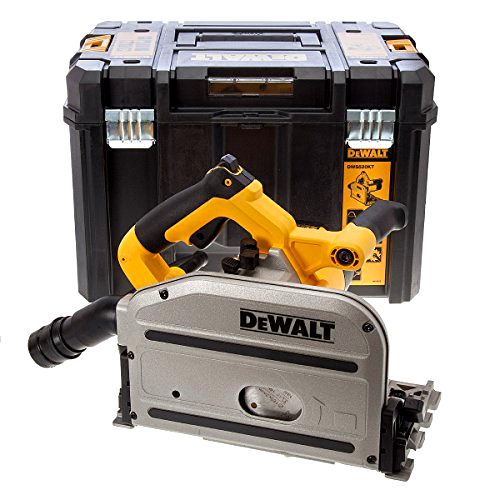
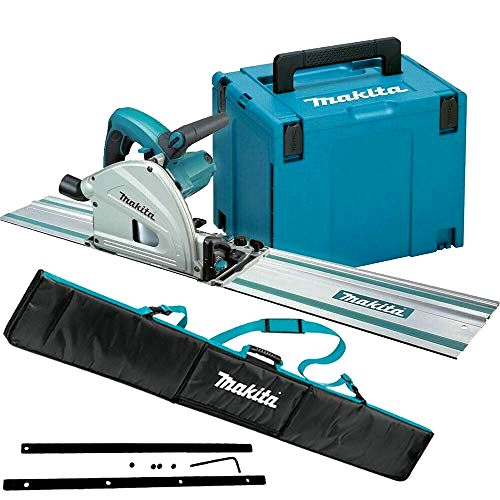
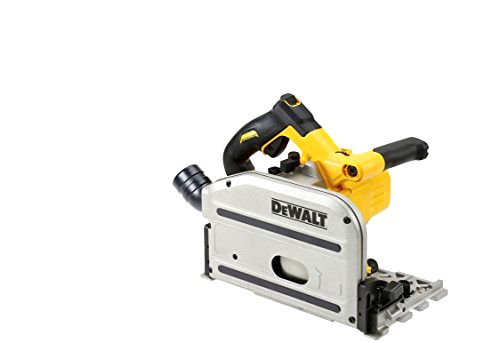
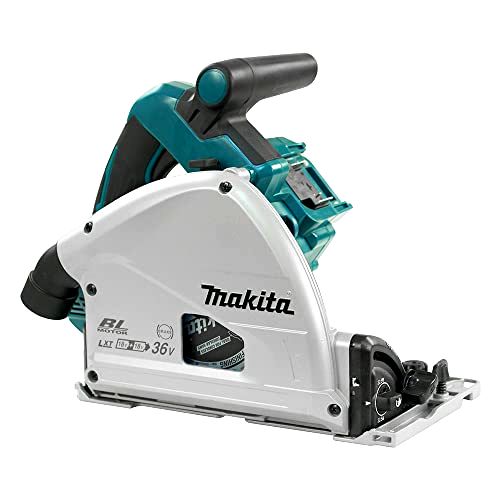
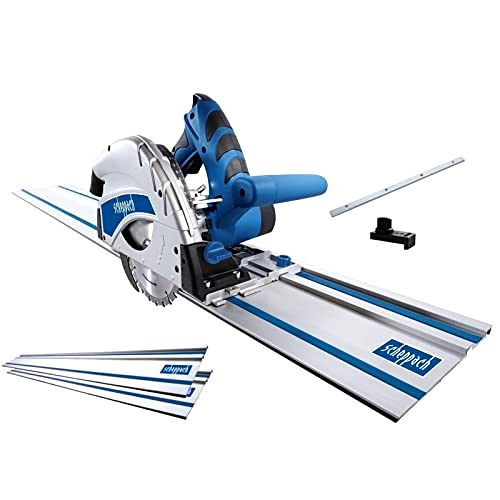
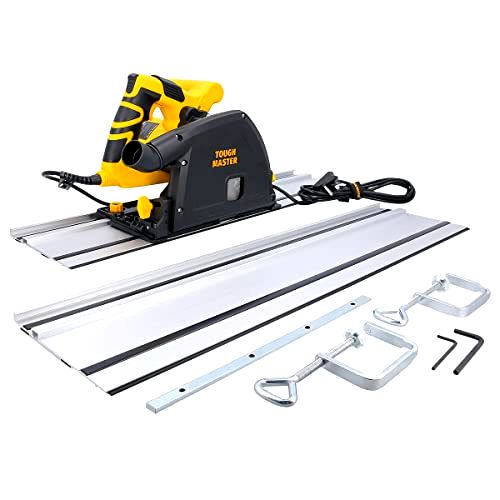
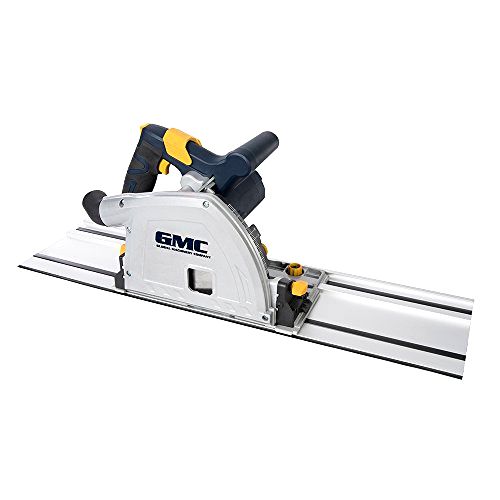

Share